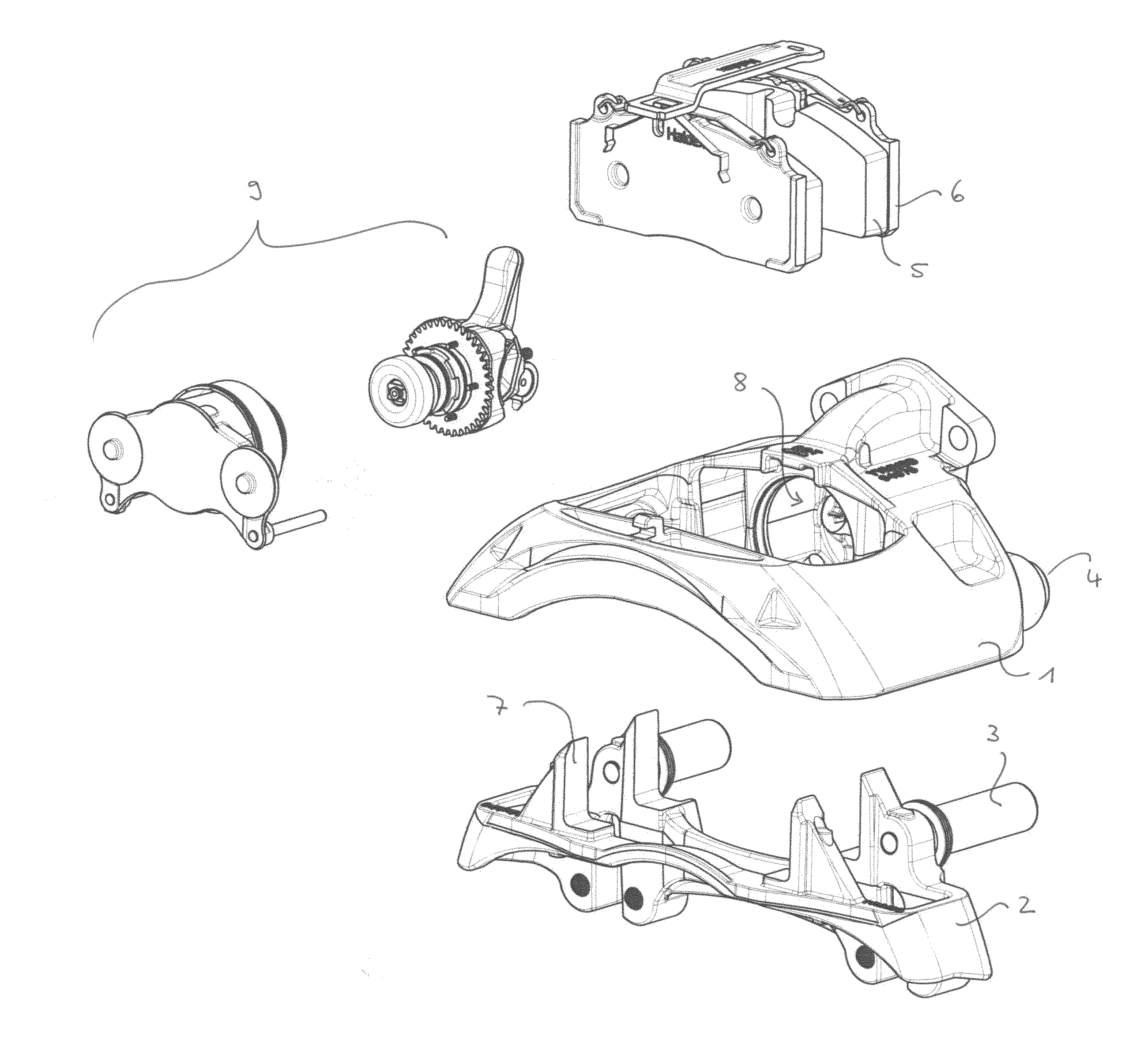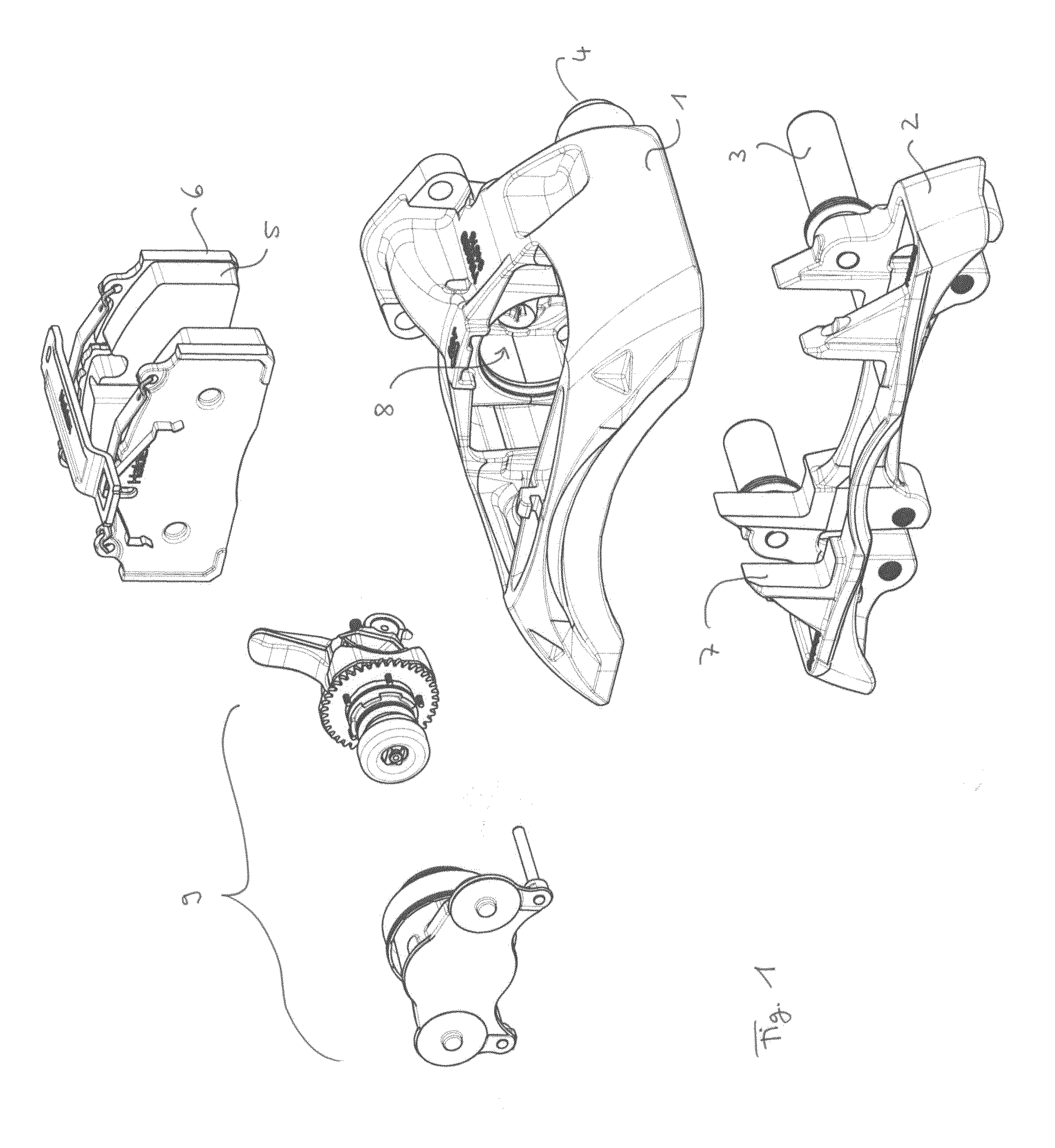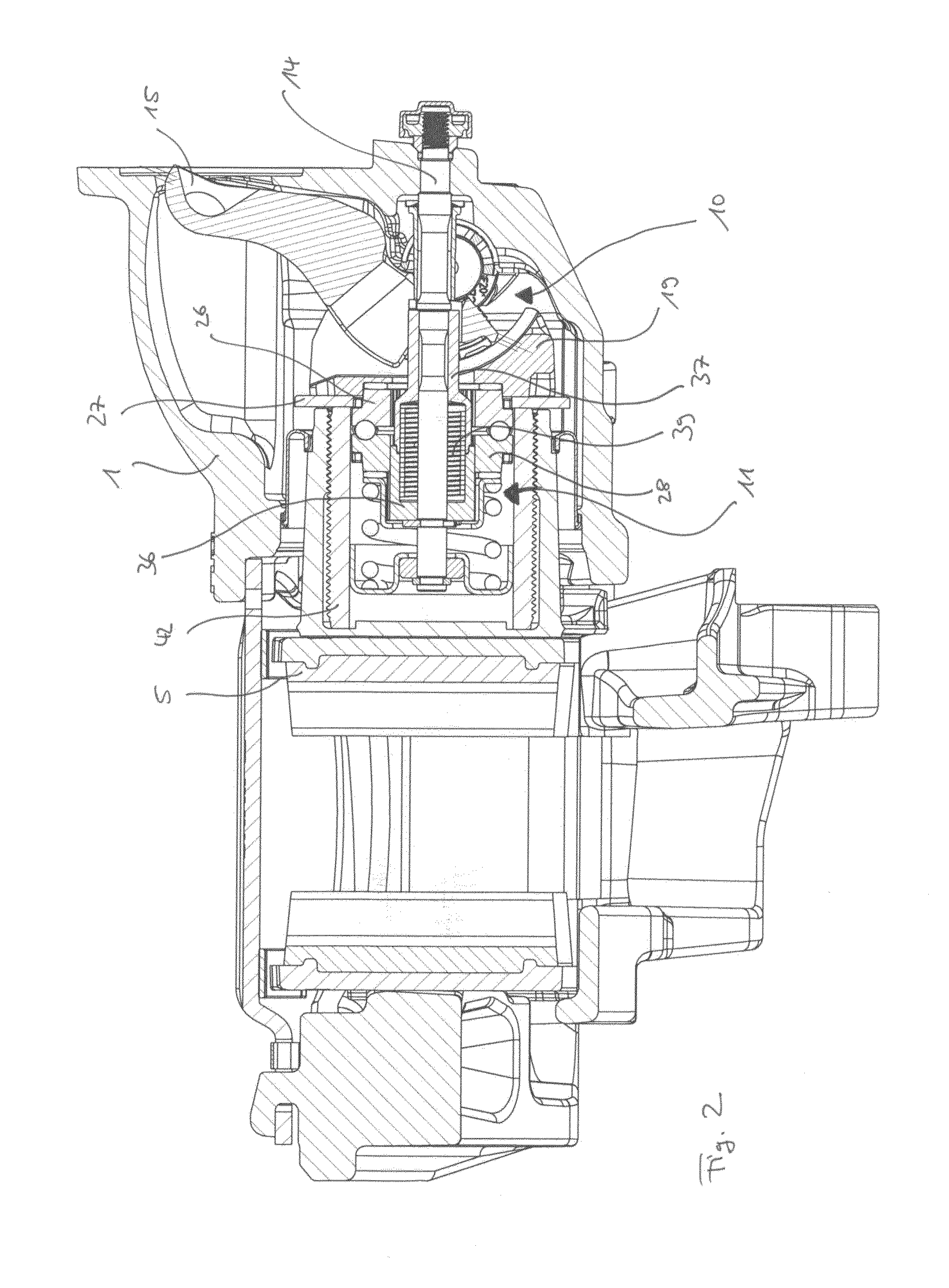Disc Brake, Brake Actuation Mechanism For Such A Disc Brake And Method For Brake Adjustment
a disc brake and disc brake technology, applied in the direction of actuators, slack adjusters, brake elements, etc., can solve the problems of counter-torque, failure to meet the expected clamping force, further heat generation, etc., to reduce the target clearance, reduce the stroke, and increase the elasticity of the caliper
- Summary
- Abstract
- Description
- Claims
- Application Information
AI Technical Summary
Benefits of technology
Problems solved by technology
Method used
Image
Examples
first embodiment
[0148]FIG. 7a shows an actuation mechanism 62 including a mechanical adjustment mechanism according to the invention. FIG. 7b is a cross-section along K-K of FIG. 7a. Furthermore, FIG. 8 shows an explosive view of this design.
[0149]The rod 14 comprises a thread 63 at its end facing the brake disc. Onto this thread 63 a nut 64 is screwed which thereby encloses a distance sleeve 65 between it and the internal holding sleeve 36. Surrounding the hollow shaft 37 and the internal holding sleeve 36 is a first clutch ring 66, which is rotationally connected to the gear wheel 27 by a splined connection and supported against the force transmitting element 19 by a bearing 67. The first clutch ring 66 attaches to a second clutch ring 68, which thereby forms a friction clutch between these rings 66 and 68.
[0150]Between the second clutch ring 68 and the internal holding sleeve 36 a rolling guidance 69 is arranged, which provides a radial rotational connection and at the same time a low friction s...
fourth embodiment
[0174]A further embodiment of a brake actuation mechanism according to the invention is shown in FIGS. 13-14; FIG. 13a is a cross-section along I-I, FIG. 13b is a cross-section along Z-Z and FIG. 13c is a cross-section along X-X of FIG. 13; FIG. 14 is an explosive view of such
[0175]The brake actuation mechanism 94 including an adjustment mechanism shown therein comprises a roller-ramp clutch with a first clutch ring 95, being supported against the force transmitting element 19 via bearing 32, and a second clutch ring 96 enclosing a roller cage 97 with rollers 98 being received in ramp surfaces 99 of both clutch rings 95, 96.
[0176]Similar as in the previous embodiment, the second clutch ring 96 is radially supported against the internal holding sleeve 36 by a rolling guidance 100 providing radial rotational connection and low friction axial sliding between these components. Axially, the second clutch ring 96 is supported against a radial flange of a sleeve 101 via a bearing ring 102....
sixth embodiment
[0193]FIG. 17 illustrates a brake actuation mechanism according to the invention, which is an alternative to the previous embodiment.
[0194]The brake actuation mechanism 118 including the adjustment mechanism comprises at the end facing the brake disc a distance ring 119, basically made as an one piece of the outer ring 116 and the distance sleeve 115 of the previous embodiment. The distance ring 119 comprises a conically shaped outer recess 120 at the side of the external holding sleeve 35. The shaped outer recess 120 of the distance ring 119 is encased by the second wrap spring 117.
[0195]The angular slack Ai in this design in fact is achieved and arranged as the reduction of the outer diameter of the distance ring 119 axially most close to the internal holding sleeve 36. A change in torque direction from slipping to gripping direction at brake release will force the second wrap spring 117 to contract the turns of its wires into a smaller diameter before they make a firm grip and st...
PUM
 Login to View More
Login to View More Abstract
Description
Claims
Application Information
 Login to View More
Login to View More - R&D
- Intellectual Property
- Life Sciences
- Materials
- Tech Scout
- Unparalleled Data Quality
- Higher Quality Content
- 60% Fewer Hallucinations
Browse by: Latest US Patents, China's latest patents, Technical Efficacy Thesaurus, Application Domain, Technology Topic, Popular Technical Reports.
© 2025 PatSnap. All rights reserved.Legal|Privacy policy|Modern Slavery Act Transparency Statement|Sitemap|About US| Contact US: help@patsnap.com



